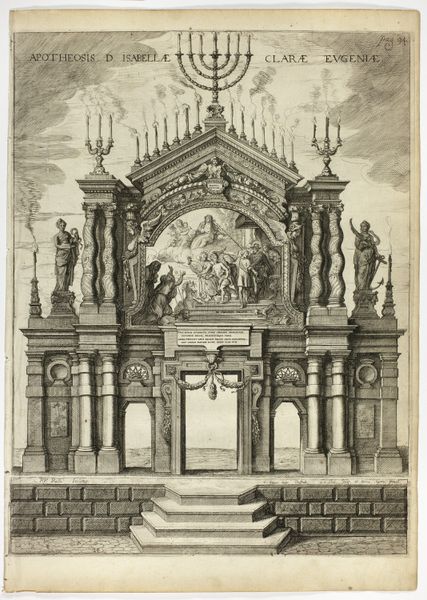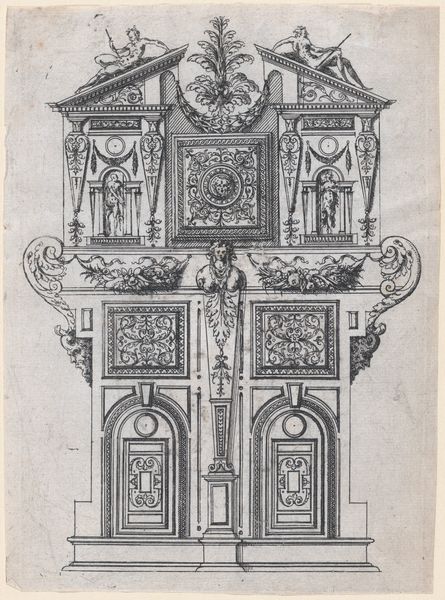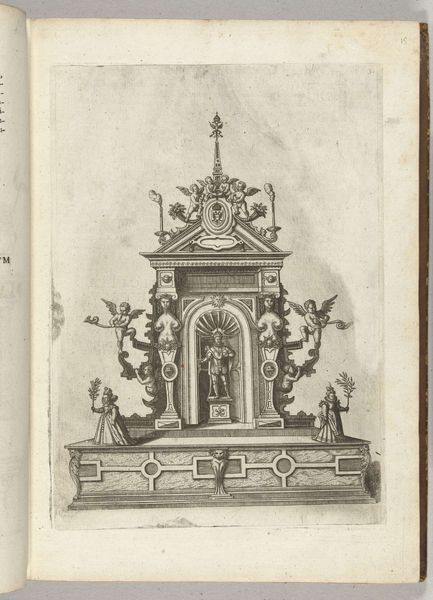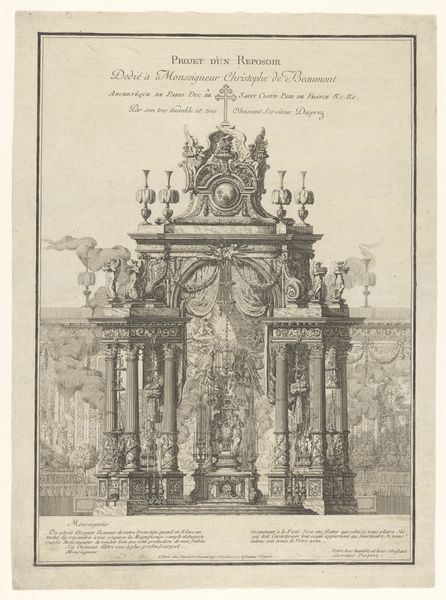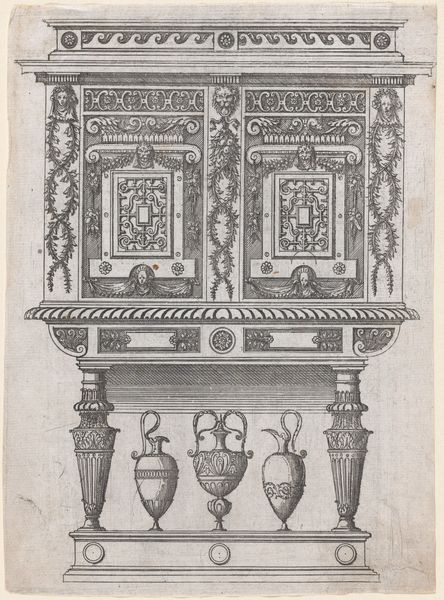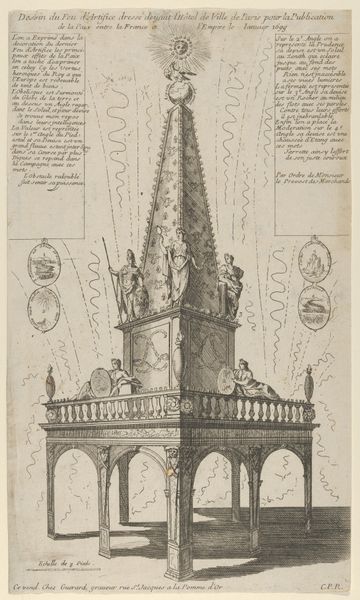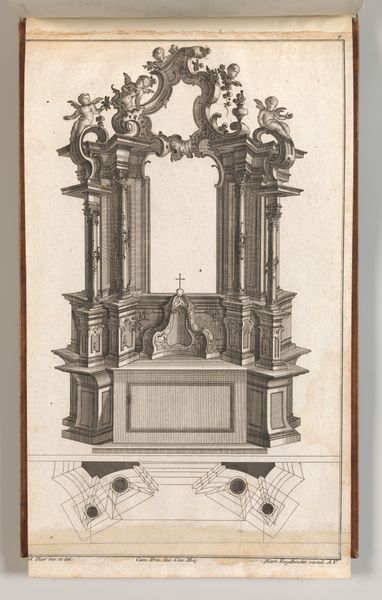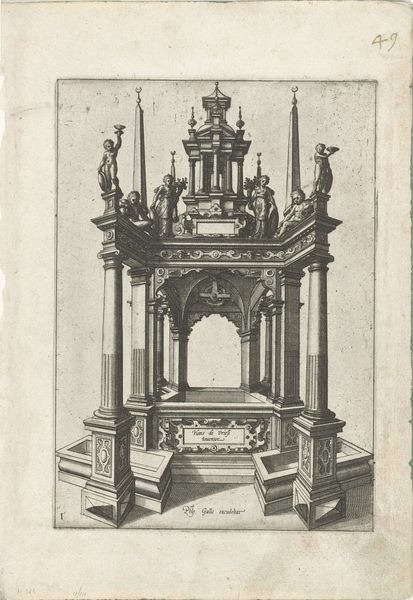
Catafalque of Philip II, King of Spain, in Antwerp Cathedral, December 8, 1598 1598
0:00
0:00
drawing, print, engraving
#
drawing
#
baroque
# print
#
history-painting
#
engraving
Dimensions: Sheet (Trimmed): 11 in. × 7 7/8 in. (28 × 20 cm)
Copyright: Public Domain
Curator: This engraving captures the elaborate Catafalque of Philip II, King of Spain, erected in Antwerp Cathedral on December 8, 1598. The artist is anonymous. It's quite striking, don't you think? Editor: It is. The immediate feeling is one of solemnity, almost oppressive in its density of detail. The stark black and white and the sheer verticality, they speak volumes about power and mourning. It is impressive, if slightly overwrought. Curator: The Baroque period certainly favoured elaborate displays, particularly around events of state. These catafalques served as temporary architectural structures, intended to convey messages about power, lineage, and piety. Engravings, like this, allowed for a wider distribution of the image, further cementing the intended message. It really speaks to how the elite controlled imagery for their advantage. Editor: Exactly! And think of the materials needed to create this actual structure. Who were the craftsmen involved? Where did they source the cloth, the wood, the candles, even the paper for the commemorative engravings? What was their daily pay, compared to the artisans decorating more ‘traditional’ works in the church? Curator: That's an important point. The scale here speaks to the material resources at play and who controls them, not just the physical resources, but even the labor itself to organize and orchestrate this kind of public expression. How many were involved with the set-up and execution, I wonder? Editor: Consider also the location: Antwerp Cathedral, a powerful religious institution playing a central role in the Spanish Netherlands. This placement broadcasts a very specific political statement, aligning the monarchy with divine authority at a pivotal moment in history. What the state gains out of its endorsement by the Church through such works. Curator: And after Philip II’s death in September of that year, such a grand, public display was an excellent means to consolidate Spanish authority. These types of events were vital political tools and this work serves as propaganda almost, wouldn't you agree? Editor: Absolutely. This image provides so much insight into the socio-political climate of the time. Considering the economics of its creation and reproduction underscores the relationship between political ambition and public perception. It's much more than just a historical record of grief, wouldn’t you agree? Curator: Yes. I appreciate how this work highlights the means of memorializing and manipulating events into spectacle to extend influence. Thank you for offering new thoughts that I had not previously explored. Editor: Indeed, analyzing the materials used and the context in which the work was produced encourages new lines of inquiry and insights into works of this nature. Thanks!
Comments
No comments
Be the first to comment and join the conversation on the ultimate creative platform.

